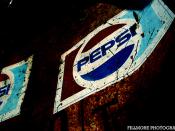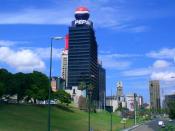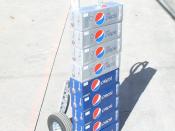Introduction of Pepsi-Cola
PepsiCo, Inc. is currently one of the most successful consumer products company in the world with annual revenues exceeding $30 billion and has more than 480,000 employees. PepsiCo, Inc. began as a successor to a company incorporated in 1931, known as Loft Inc. Once known as Pepsi-Cola, the company expanded its business and adopted its current name, PepsiCo, after a merger with Frito-Lay in 1965. This merger dramatically increased PepsiCo's market potential and set the foundation for the company's tremendous growth.
Today, Pepsi-Cola Company is a major division of PepsiCo's corporate structure. Pepsi-Cola Company now produces and markets a wide range of beverages to retail, restaurants and food services in more than 191 countries and territories around the world and brings in annual revenue of $10 billion. There are 200 plants in the US and Canada, as well as, 530 plants throughout the rest of the world, that produces Pepsi-Cola's beverages.
Since the creation of Pepsi-Cola in 1898, Pepsi-Cola Company has introduced 13 beverages that wear the Pepsi-Cola trademark. Five of Pepsi-Cola's brand names: Pepsi, Diet Pepsi, Mountain Dew, 7 UP, and Mirinda, each brings in annual revenue in consumer sales of $1 billion. In 1992, a partnership between Thomas J. Lipton and Pepsi was formed. This partnership produces, markets, and distributes Lipton Brew, Lipton Brisk and Lipton Fountain Ice-Tea. And in 1993, Pepsi Max a low calorie cola was created and introduced only for the international markets. Pepsi Max is now produced in over 40 countries and is the third largest-selling cola brand outside the US.
PepsiCo is continuing to expand and introduce new alternative beverages in the market. There are four alternative beverages that are currently being tested in our market today. Mazagran, a cold sparkling coffee based beverage, Aquafina, a bottled water, and a...



Good essay
this essay include all marketing planning steps
1 out of 1 people found this comment useful.